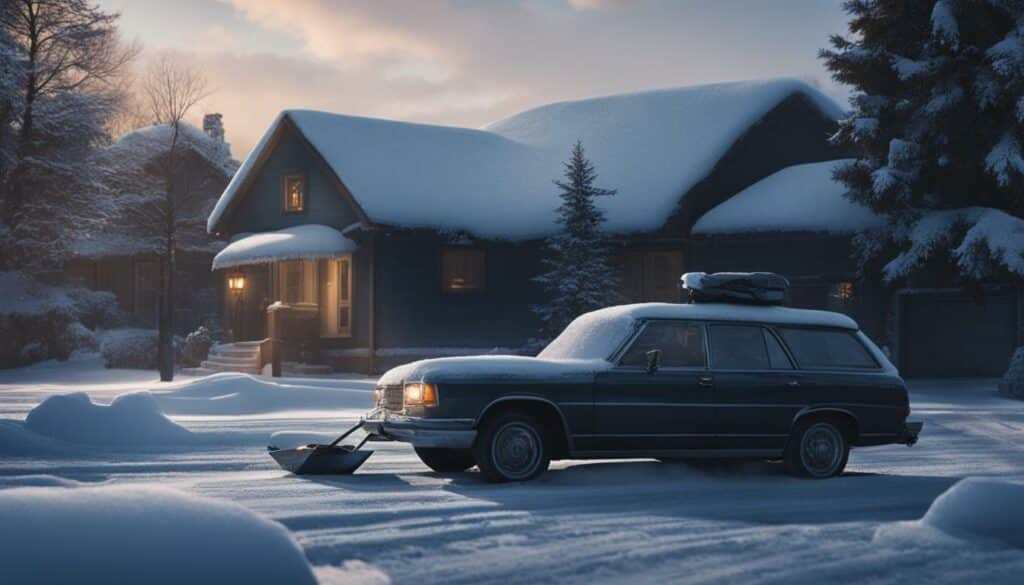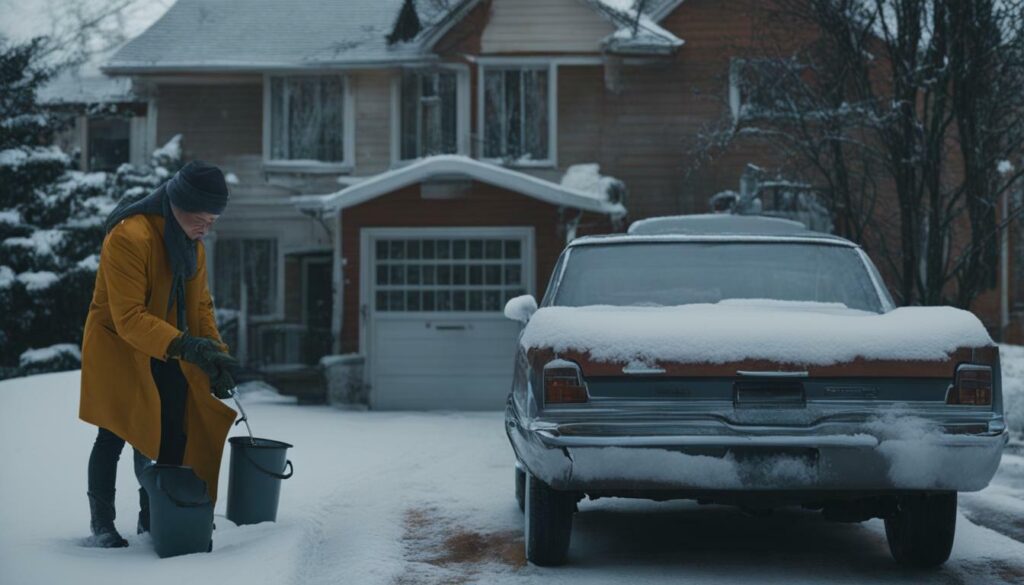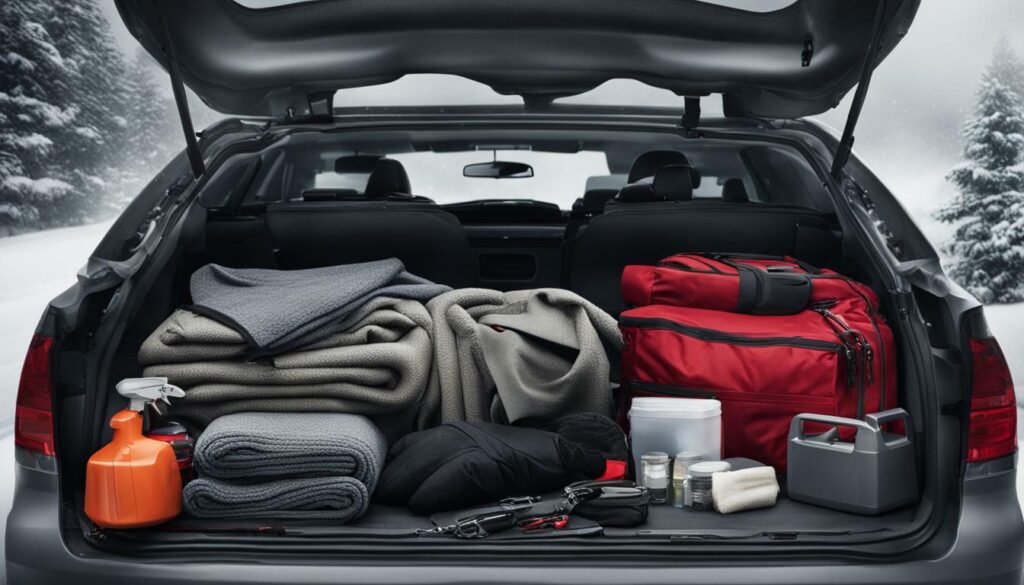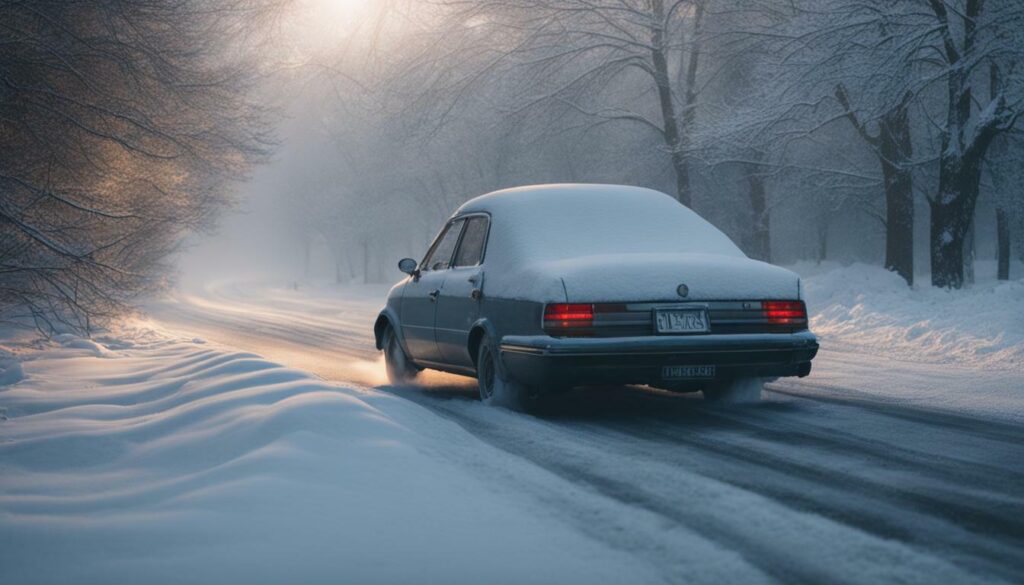Winter can be a challenging time for drivers, especially in New Zealand where the weather can be unpredictable and severe. As the Kiwi winter approaches, it is essential to prepare your vehicle to ensure safe and reliable transportation. Winter vehicle maintenance may seem daunting, but with the right tips and guidance, you can get your vehicle ready for the colder months.
In this article, I will provide you with expert car care tips and practical advice on winter car maintenance. You will learn how to prepare your car for winter driving, winterizing your car, and protecting your vehicle from rust and corrosion. I will also discuss emergency preparedness and what to do in case of a breakdown or getting stuck in the snow.
By following the steps outlined in this article, you can ensure that your vehicle is ready to tackle the unique challenges of the Kiwi winter. From checking and replacing fluids to inspecting the battery and electrical system, you will learn how to keep your car in top condition throughout the colder months.
Key Takeaways:
- Preparing your vehicle for winter driving is essential to ensure safe and reliable transportation.
- Winter vehicle maintenance involves checking and replacing fluids, inspecting the battery and electrical system, and examining the tires and brakes.
- Protecting your vehicle from rust and corrosion is crucial during the Kiwi winter, and preventive measures such as applying a protective wax coating and cleaning the undercarriage can help.
- Proper heating and defrosting are essential for clear visibility and safe driving in winter conditions.
- Being prepared for emergency situations while driving in winter conditions can help keep you and your passengers safe.
Understanding the Challenges of the Kiwi Winter
As a car owner in New Zealand, it’s important to be aware of the challenges that come with the Kiwi winter. Icy roads, cold temperatures, and increased precipitation can make driving more difficult and dangerous. That’s why it’s crucial to prepare your vehicle for the colder months.
Proactive maintenance is key to ensuring safe and reliable transportation during the winter. Cold weather can take a toll on your vehicle, causing wear and tear on important components.
To avoid potential breakdowns and accidents, it’s essential to perform regular winter vehicle maintenance. This includes checking and replacing fluids, inspecting the battery and electrical system, examining the tires and brakes, and ensuring proper visibility through effective use of defrosters and wipers.
By taking these necessary precautions, you can help prevent costly repairs and ensure your vehicle is prepared for winter driving in New Zealand.
Remember, in the Kiwi winter, it’s better to be safe than sorry.

Stay tuned for the next section, where I’ll outline the essential steps for winterizing your car.
Winterizing Your Car: Essential Steps for Cold Weather
Winter can be tough on vehicles, which is why it’s essential to prepare your car for the colder months. Here are some winter car maintenance tips to help ensure that your car is ready for the Kiwi winter:
Check and Replace Fluids
Fluids are critical to your car’s operation all year round, but they are especially important in the winter. You should check your car’s oil, coolant, brake fluid, and windshield wiper fluid regularly and replace or top them up as needed. Using the manufacturer-recommended types of fluids will help ensure that your car performs optimally during the winter.
Inspect the Battery and Electrical System
The cold weather can put a strain on your car’s battery and electrical system, so it’s important to ensure that they are in good condition. You should have your battery tested before winter arrives to ensure that it can handle the cold temperatures. You should also check the electrical connections and make sure that the alternator and starter are functioning correctly.
Examine the Tires and Brakes
Your tires and brakes are crucial for safe winter driving. Before the snow falls, make sure that your tires are properly inflated, have adequate tread depth, and are in good condition. You may also want to consider switching to winter tires if you live in an area with heavy snowfall. Additionally, you should have your brakes inspected and replace worn brake pads to ensure proper stopping power.
Ensure Proper Visibility
Good visibility is essential for safe winter driving. Make sure that your car’s defrosters and wipers are working correctly, and replace worn wiper blades. You should also keep your windshield clear of snow and ice to prevent reduced visibility while driving.
Consider Professional Assistance
If you’re not comfortable performing the winter car maintenance tasks on your own, consider going to a trusted mechanic or dealership. They can help ensure that your car is ready for the Kiwi winter and identify any potential issues before they become bigger problems.
By following these winter car maintenance tips, you can help ensure that your car is ready for the challenges of the colder months. Stay safe on the roads this winter!

Winter weather can be harsh on your vehicle both inside and out. One of the biggest threats that car owners face during the Kiwi winter is rust and corrosion. The salt and other chemicals used to de-ice roads can build up on the undercarriage of your car, leading to rust and corrosion over time. This can cause serious damage and compromise the safety and reliability of your vehicle. Therefore, it’s crucial to take preventive measures to protect your car from the elements and extend its lifespan.
To keep your vehicle in top shape, follow these winter vehicle maintenance tips:
| Tip | Description |
|---|---|
| Wax Your Car | Applying a coat of wax to your car’s exterior can help protect it from the corrosive effects of salt and other chemicals. Wax creates a barrier between the paint and the elements and can also give your car a shiny finish. Be sure to use a high-quality wax and apply it in a shaded area away from direct sunlight or heat. |
| Wash Your Car Regularly | Regular car washes during the winter can help remove salt and other debris from the body of your car, preventing rust and corrosion. Ideally, you should wash your car at least once a week and opt for an undercarriage wash to remove buildup from the bottom of your vehicle. |
| Clean the Undercarriage | In addition to washing your car, you should also clean the undercarriage to remove salt and debris that can lead to rust and corrosion. Use a pressure washer or hose to spray the underside of your car and pay extra attention to the wheel wells and other hard-to-reach areas. If you don’t have access to a pressure washer, you can also use a garden hose with a high-pressure spray nozzle. |
By taking these simple steps, you can protect your vehicle from the damaging effects of winter weather and keep it in optimal condition for years to come. Don’t neglect your car’s undercarriage, as it is particularly vulnerable to corrosion during the Kiwi winter. With regular maintenance and care, you can ensure safe and reliable transportation during this season and beyond.

When driving in cold weather, it’s essential to have a functional heating and defrosting system in your car. Not only is it more comfortable, but it also enhances safety by helping you maintain clear visibility. Here are some car care tips to ensure your heating and defrosting system is in top condition:
- Check the coolant levels: The coolant in your car’s engine helps regulate the temperature and prevents overheating and freezing. Make sure the coolant levels are topped up and that there are no leaks in the system.
- Inspect the thermostat: A malfunctioning thermostat can cause the engine to overheat or prevent the heater from working correctly. Make sure the thermostat is functioning correctly and replace it if necessary.
- Clean or replace the cabin air filter: A dirty or clogged cabin air filter can reduce heating and airflow in the car’s interior. Regularly clean or replace the filter to ensure optimal performance.

Additionally, consider using seat warmers or blankets to stay warm during particularly cold drives. Don’t resort to using the defrost setting as a heating source because it can overload the electrical system and drain the battery. Remember to clear snow and ice from the hood and windshield to increase visibility and prevent any damage to the car’s heating and defrosting system.
Emergency Preparedness for Winter Driving
Driving during the Kiwi winter can be challenging and unpredictable. It’s always best to be prepared for emergency situations by keeping some essential items in your car at all times.
A well-stocked emergency kit can be a lifesaver in case of a breakdown or getting stuck in the snow. Some of the items you should include in your emergency kit are:
- Warm clothing, such as a jacket, hat, and gloves
- Blankets or a sleeping bag to keep you warm
- A fully charged cellphone and a charger
- A flashlight with extra batteries
- Non-perishable food and water
- A first aid kit
Make sure to keep your gas tank at least half full to avoid running out of gas in case of a long delay or detour. It’s also a good idea to let someone know your travel plans and estimated arrival time, especially if you’re driving in a remote area.
If you do find yourself stuck in the snow, stay calm and avoid overexertion. Use your emergency kit to stay warm and contact roadside assistance or emergency services if needed. Avoid leaving your car unless it’s absolutely necessary, as walking in a snowstorm can be dangerous.
By taking these proactive steps, you can ensure that you’re ready for whatever challenges the Kiwi winter may bring. Remember to stay safe and informed on the road, and don’t hesitate to seek help if you need it.

In conclusion, preparing your vehicle for the Kiwi winter is an important aspect of car maintenance 101. By following the winter car preparations outlined in this article, you can ensure that your vehicle is ready to handle the unique challenges of the Kiwi winter. Remember to prioritize winter vehicle maintenance by checking and replacing fluids, inspecting the battery and electrical system, examining the tires and brakes, and ensuring proper visibility through effective use of defrosters and wipers.
Moreover, protecting your vehicle from rust and corrosion is another essential consideration during this season. Applying a protective wax coating, washing the car regularly, and cleaning the undercarriage to remove salt and debris can help prolong your car’s lifespan. Additionally, ensuring proper heating and defrosting is critical to driving safely in the winter. Test and maintain these systems and keep a clear view of the road.
Lastly, emergency preparedness for winter driving is essential. Keep an emergency kit, charged cellphone, warm clothing, and extra blankets in your trunk. Know what to do in case of a breakdown or getting stuck in the snow.
In summary, by following these winter car care tips and seeking professional help when needed, you can make sure that your vehicle is ready to tackle the Kiwi winter. Don’t let winter catch you off guard. Prepare your vehicle now to ensure a safe and reliable driving experience.
FAQ
Why is car maintenance important during the Kiwi winter?
Car maintenance is important during the Kiwi winter because colder temperatures, icy roads, and increased precipitation can make driving more challenging. Proper maintenance ensures safe and reliable transportation during this season.
What are the challenges of the Kiwi winter for vehicle owners?
The challenges of the Kiwi winter for vehicle owners include cold temperatures, icy roads, and increased precipitation. These conditions can affect the performance of the vehicle and require proactive maintenance.
What are the essential steps for winterizing your car?
The essential steps for winterizing your car include checking and replacing fluids, inspecting the battery and electrical system, examining the tires and brakes, and ensuring proper visibility through effective use of defrosters and wipers.
How can I protect my vehicle from rust and corrosion during the winter?
To protect your vehicle from rust and corrosion during the winter, apply a protective wax coating, wash the car regularly, and clean the undercarriage to remove salt and debris.
How can I ensure proper heating and defrosting in my car?
To ensure proper heating and defrosting in your car, check the coolant levels, inspect the thermostat, and clean or replace the cabin air filter. Clear visibility is essential for safe driving in winter conditions.
What should I do to be prepared for emergency situations while driving in winter conditions?
To be prepared for emergency situations while driving in winter conditions, keep an emergency kit, a fully charged cellphone, warm clothing, and extra blankets in your car. Know what to do in case of a breakdown or getting stuck in the snow.




